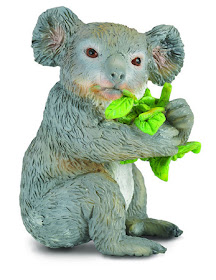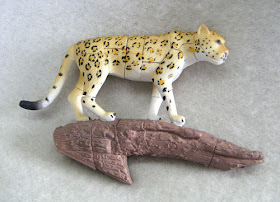Why yes, Little Red Riding Hood...he's safe to pet...
Our Plastic Timberwolf
This engaging, realistic-looking plastic wolf miniature is made of durable plastic with good quality. This replica has detailed fur and an attractive realistic pose, its head down while it stalks its prey. This wolf replica makes for a nice pet, fits into a shoebox diorama, or serves as a great collectible. It is 3 3/4 inches long. Check out our other dog toys and gifts.
About Wolves
The most common type of wolf is the gray wolf, although it has been hunted to extinction in western Europe, Mexico, and the majority of the U.S. Wolves in general live up to 18 years. Of these, the European wolf is the largest, weighing up to 85 pounds.
Wolves are very skilled predators, and they are typically the highest creature in the food chain in the area that they live in. The only animals that pose any sort of significant threat to wolves are tigers and humans. They hunt ungulates, which are hoofed animals, for food. Genetic tests done on a multitude of wolves have proven that while there are many different wolves that have evolved into many different domestic dogs, the gray wolf specifically is the type that has contributed most to pet stores worldwide.
This blog is sponsored by Tapir and Friends Animal Store.





























